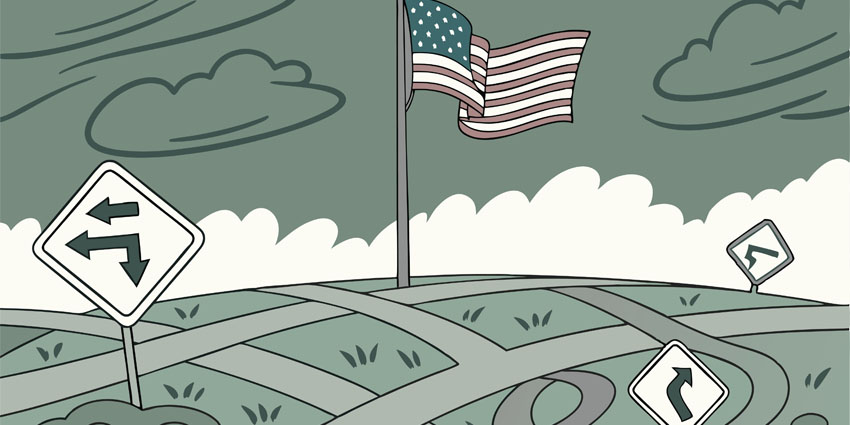The Trump administration’s tariffs are sparking global turmoil in every industry. However, the UC and collaboration space is disproportionately affected, with critical component parts imported by some of the most severely tariffed regions, particularly China.
Over the weekend, Logitech withdrew its outlook for the 2026 fiscal year, citing the tariffs’ unpredictability as the cause. This instinctively felt like a canary in the coal mine for the UC and collaboration industry, a viable warning for how the tariffs are undermining strategic planning, innovation, and deal-making across the industry.
But what do industry analysts and experts think and what are they hearing? Is the picture more nuanced or as worryingly erratic as it appears at face value?
“My own perspective is that there is chaos out there in the wider market,” Evan Kirstel, Chief Digital Evangelist and Cofounder at eViRa Health, told UC Today. “But specifically in the enterprise, some of our favourite devices and endpoints, obviously laptops and cell phones, but many, many more are manufactured in China.”
“There are a lot of direct impacts, not just with manufacturers, but OEM labels. I’m thinking of Grantstream and others who are very popular in the enterprise, have amazing price performance and sell directly under their own brand. They’re going to be hit. But then the big OEMs who manufacture in China are being hit. And it’s not a matter of a 10, 20 or 30 percent tariff. Prices increase where you can adjust. These current levels of 100, 145, and 150 percent tariffs make your product unsellable in any fashion.”
Kirstel underlined that supply chains will be strained and that many projects will be delayed unless a resolution is found.
Zeus Kerravala, Founder and Principal Analyst at ZK Research, emphasised the key obstacle to tech adapting to this new reality is unrelenting volatility: “The reality is it’s created havoc with the tech companies and their partners because of the uncertainty. I think everyone’s accepting the fact that tears are gonna happen, but it’s the constant yo-yo of we’re in, we’re out, we’re in.”
I was talking to one of the larger Cisco resellers about this, and they were saying that they were helping their customers plan for the tariffs. They were going to pre-buy some equipment before the price hit, but hikes came. Then the pause came and that pushed out projects even further. And in tech, fast change fast in 90 days, 180 days. It’s the inability to plan.”
Kerravala said this question came up at this year’s Mobile World Congress, which featured (Cisco CEO) Chuck Robbins at a round table discussion. Robbins stressed that Cisco created contingencies to mitigate the tariffs. However, now that they’re changing again, Robbins has to create contingencies against the contingencies.
“So it’s not the tariffs themselves—you can plan around that,” Kerravala continued. “The uncertainty this administration has created in trying to impose the tariffs has caused the problem. And I think (Trump) needs to pick a path and move forward with it because this constant yo-yo-ing of policy isn’t helping anybody out.”
“I think that’s it; it’s the uncertainty,” agreed Irwin Lazar, President and Principal Analyst at Metrigy. “If you’re a business thinking about making investments right now, how do you make any kind of decision that you’ll be confident will still be the version six months from now without knowing what direction we’re heading?”
Kerravala raised another pertinent point: If the best decision is to build a local manufacturing hub, that’s fine, but it takes years to build a plant, not weeks.
“If you go down that path and then a year from now, all this turned out to be a simple bargaining tool for this administration to get what they want from other countries and things go back to the way they were, then they’ve wasted a year. So how can you go about building a plant that will take multiple years if you don’t know that they’ll stick?”
“I think it’s an unfair situation in which the business world has been put. It’s forced a pretty big sell-off. A bigger drop in capital value than we’ve seen since even before the pandemic.”
There’s another concerning factor in play here: the threat to innovation.
“If people are having to cut back on so much spending, that means they’re cutting back on R&D,” noted Melody Brue, Vice President and Principal Analyst at Moor Insights and Strategy. “That means they’re possibly using cheaper components. This affects both the company’s ability to innovate and what the end consumer ends up with.
“If you think in the case of smartphones, we may get dumb phones because the supply chain is going to be destroyed for a while. So, I think there are a lot of shifts from engineering teams right now to having to focus on cost reduction rather than creating the best things. That’s a threat to both the companies and the consumers.”
UC Today’s latest Big News Show, with the full discussion around Trump’s tariffs impact on the industry, is coming soon.
Join the UC Community That’s Shaping the Future
Connect with thousands of UC pros, share your voice, and stay ahead of the curve. Be heard, be inspired, and help shape what’s next in Unified Communications. Join the conversation today.











